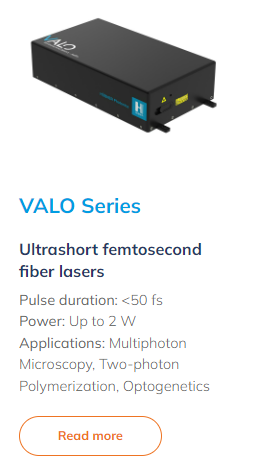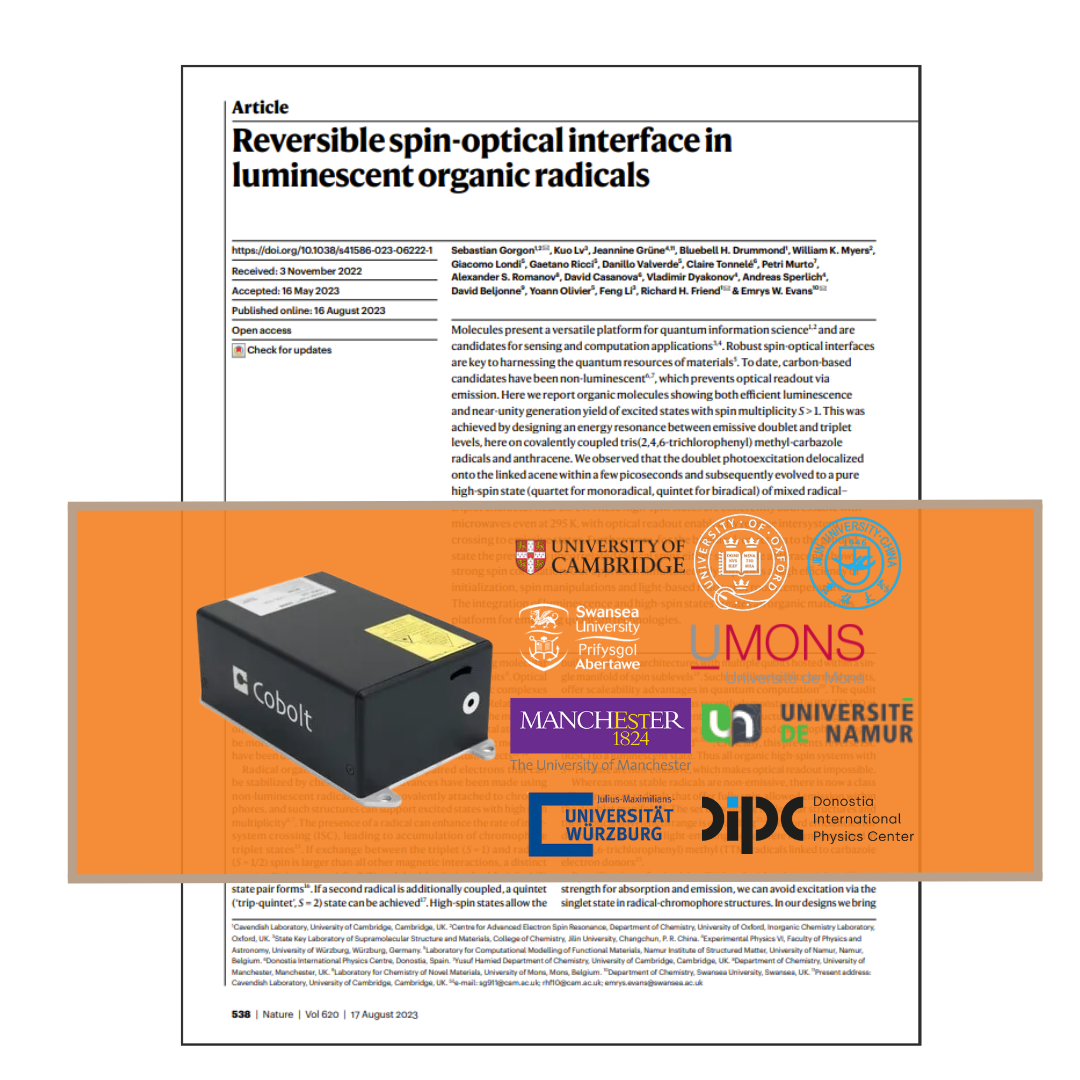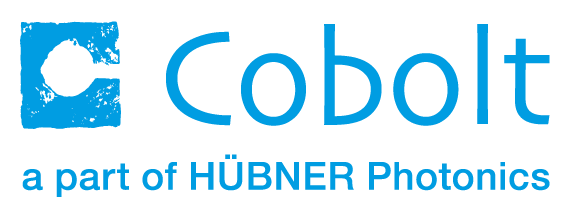15 February, 2023
Breakthroughs using multiphoton microscopy
Multiphoton microscopy has revolutionized biological imaging by allowing high-resolution imaging in 3D without the need for dyes or labels. An important aspect of this technology is the use of very short femtosecond pulses. The use of these pulses has several advantages that have made multiphoton microscopy a valuable tool in the study of biological samples.
One of the major advantages of using femtosecond pulses in multiphoton microscopy is reduced photodamage to the sample. The short pulse duration minimizes the exposure time to light, reducing the amount of photodamage that occurs during imaging. This is particularly important in the study of live samples, as it allows researchers to obtain high-resolution images without affecting the viability of the sample.
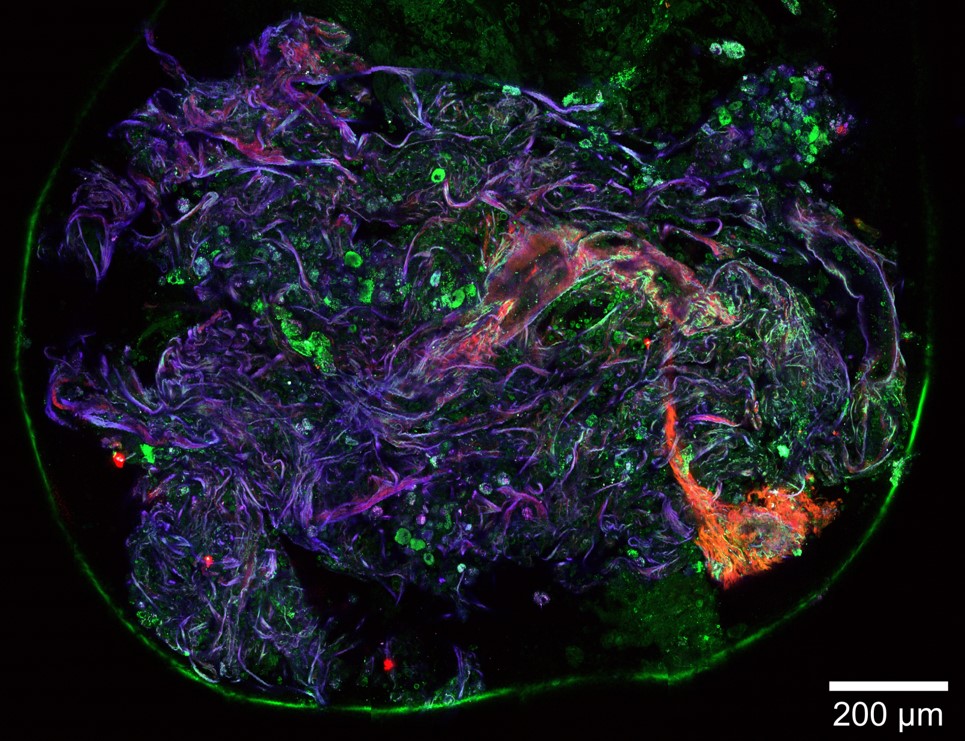
Multi photon microscopy image of lung tissue. Co. of Prof ML Groot Vrije Uni Amsterdam
Another advantage of using femtosecond pulses is increased efficiency of two-photon fluorescence. The high peak power of these pulses enhances the nonlinear interaction, resulting in increased fluorescence efficiency. This allows researchers to obtain high-resolution images with fewer photons, reducing the need for high laser power and minimizing photodamage.
In addition, femtosecond pulses provide improved spatial resolution in multiphoton microscopy. The short pulse duration and high peak power allow for high-resolution imaging in 3D, enabling researchers to study samples at the cellular and subcellular level.
Advantages of ultrashort pulse durations: sub 50 fs
Since the efficiency in multiphoton excitation is strongly dependent on the peak power of the incident light during the pulse, the shorter the pulse, the higher the peak power and the stronger the generated multiphoton signal. Up till now there has been relatively limited ability to generate ultrashort and clean pulses below the 80 fs limit.
The VALO Femtosecond Series offers a novel approach to overcome this limit, resulting in much shorter (sub 50 fs) and clean pulses. Figure 1 illustrates the relationship between the two-photon and three-photon efficiencies and the pulse duration [1, 2]. The efficiency of multiphoton events depends non-linearly on the laser peak power, and the corresponding signal increases with the square and cube of the incident light’s peak power, for two and three photon processes, respectively. For instance, decreasing the pulse duration from 200 fs to 50 fs results in a 4 times higher peak power, the two-photon efficiency is increased by a factor of 4 while the three-photon efficiency increases by a factor of 16.
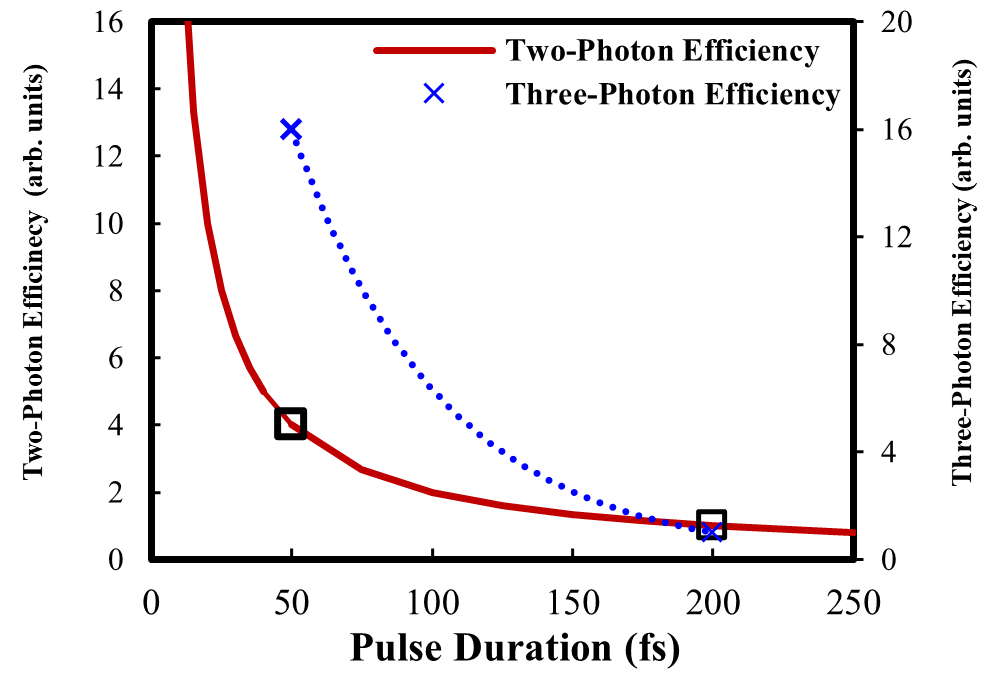
Figure 1: Two and three photon efficiency vs. pulse duration
However, to experimentally apply this relationship, it is essential to accurately determine the pulse duration at the sample. If dispersion in the microscope optics is not properly compensated for, the pulses will be stretched, and lower peak power will be measured at the sample. In such a case, the relationship between pulse duration and higher-order harmonics generation efficiency, cannot be accurately verified experimentally. To generate sufficient non-linear SHG and THG signals to achieve the required signal-to-noise ratio at average power levels that are gentle to the sample, sub 50 fs pulses and the use of dispersion pre-compensation is essential.
Figure 2a) shows the third harmonic signal from a calibration grid using an average power of 4.7 mW on the sample, with the full bandwidth of the VALO Femtosecond Series laser, yielding ~40 fs pulses. In Figure 2b), the spectral bandwidth of the laser was restricted to 10 nm FWHM around 1 064 nm, resulting in ~160 fs pulses. The image in Figure 2a) and 2b) are identically scaled, but Figure 2b) shows no THG signal. Only after rescaling the lower THG signal from the longer ~160 fs pulses, was it possible to obtain an image above the experimental noise floor, as shown in Figure 2c). In this case, a 2.5 times higher average laser power was needed to achieve a signal to noise ratio comparable to that of THG signals obtained from shorter sub 50 fs pulses [3].
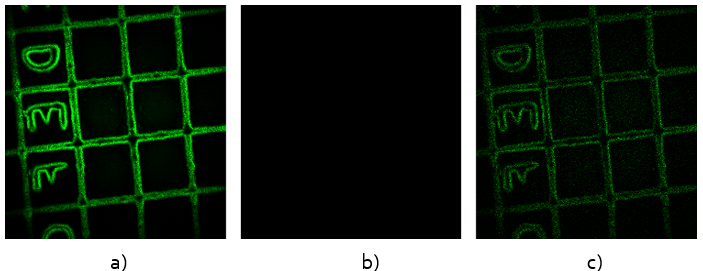
Figure 2: Third harmonics of a calibration grid (Ibidi) with 50 micrometer squares. a) 4.7 mW, full spectrum short pulses (<50 fs; VALO Series). b) 6 mW with laser spectrum limited to 10 nm bandwidth (~160 fs). c) Scaled up contrast for the 6 mW laser spectrum limited to 10 nm bandwidth (~160 fs).
In conclusion, the use of very short femtosecond pulses in multiphoton microscopy has several advantages, including reduced photodamage, increased efficiency, improved spatial resolution, and reduced background signal. In particular, the ultrashort sub 50 fs pulses provide considerably higher pulse peak powers, which results in optimal signal-to-noise ratio images at much lower average power, which in turn reduces photobleaching, and extends cell viability. These advantages have made multiphoton microscopy a valuable tool in the study of biological samples, allowing researchers to obtain high-resolution images with minimal photodamage.
References
[1] Shuo Tang, Tatiana Krasieva, Zhongping Chen, Gabriel Tempea, Bruce Tromberg (2006), Effect of pulse duration on two-photon excited fluorescence and second harmonic generation in nonlinear optical microscopy, Journal of Biomedical Optics, 11(2).
[2] Mira Sibai, Hussein Mehidine, Fanny Poulon, Ali Ibrahim, M. Juchaux, J. Pallud, A. Kudlinski, Darine Haidar (2018), The Impact of Compressed Femtosecond Laser Pulse Durations on Neuronal Tissue Used for Two-Photon Excitation Through an Endoscope, Scientific Reports, 8:11124.
[3] White paper, Sub 50 femtosecond pulse lasers for gentler multiphoton microscopy, HÜBNER Photonics. In publication Feb 2023.
………………………………………………………………………………………………………………………………………………………………………………………………..
Learn more about the range of ultrafast femtosecond fiber lasers from HÜBNER Photonics. With outstandingly high pulse peak power levels and computer controlled group velocity dispersion pre-compensation, the VALO femtosecond fiber lasers are ideal for multiphoton imaging.
More resources
Explore our Publications for practical insights on how our customers are leveraging the power of our lasers in their projects.
Customer publications
Product line: Cobolt
Application: Quantum
Wavelength: 532 nm, Tunable VIS
New Discovery in Quantum Technology: Shining Light on Organic Molecules
scientists have developed organic molecules that can glow brightly and be used in advanced quantum technologies
Customer publications
Product line: Cobolt
Application: Quantum
Wavelength: 594 nm, Femtosecond 1um
Nanographene Research Unveils Highly Soluble Quantum Dots
Researchers have unveiled a new family of nanographene materials with the help of the Cobolt Mambo 594 nm laser.
Customer publications
Product line: Cobolt
Application: Fluorescence microscopy
Wavelength: 488 nm
New Breakthrough in Cellular Imaging with the Cobolt 06-MLD Laser
Scientists at the KTH Royal Institute of Technology in Sweden, and Calico Life Sciences, have made significant strides in cellular imaging.


